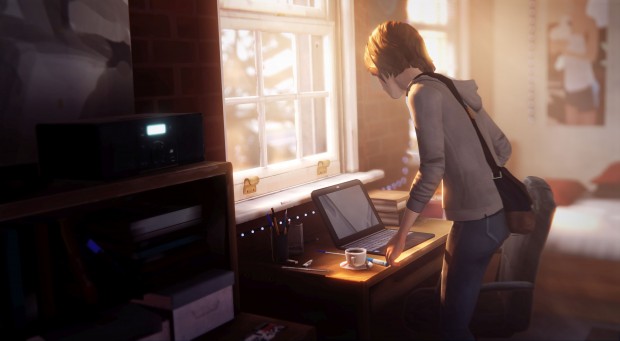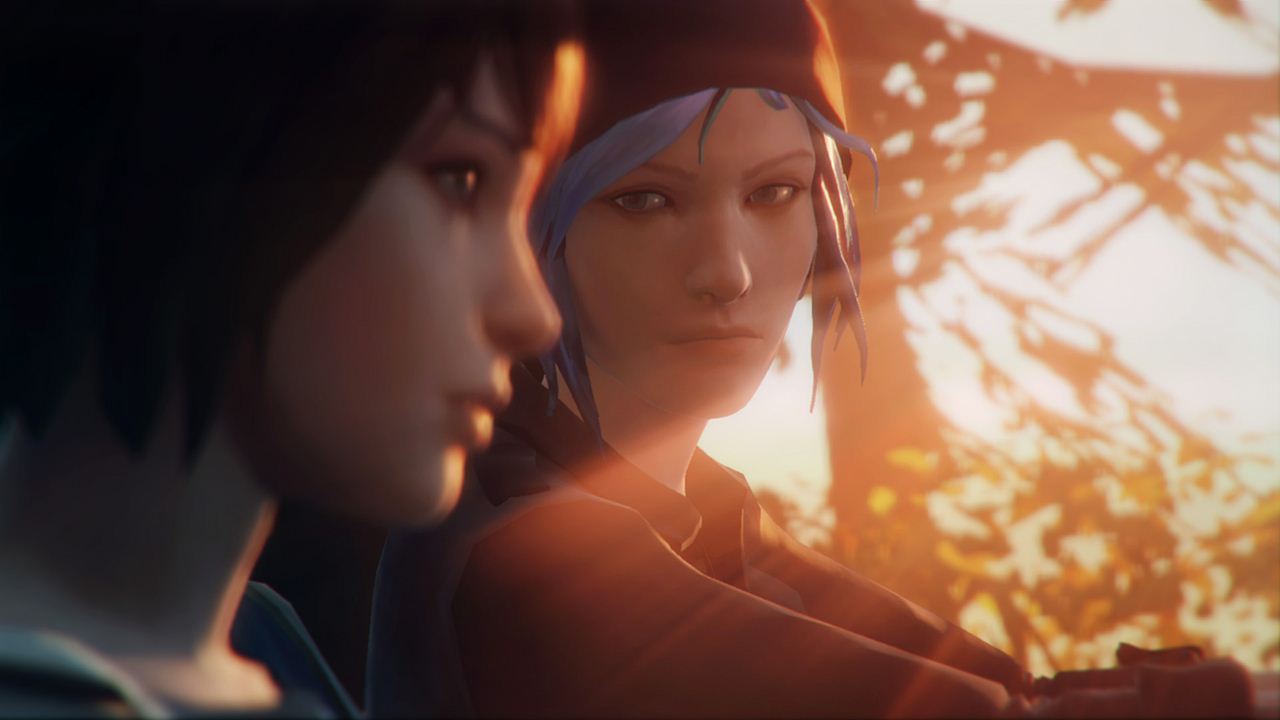
Developing the game as an episodic adventure full of choices, repercussions and an emotional cast wrapped in a blanket of teenage hipster melodrama. Studio Dontnod Entertainment has taken a route with narrative structure that’s vastly different from their most recent title, Remember Me. Under the name of Chrysalis Episode 1 Life is Strange places the player into the shoes of Max Caufield, a High School photography student who returns to her hometown of Arcadia Bay, Oregon.
Struggling to fit in and find her place amongst her High School peers, the execution of Max’s emotions and personality as she wonders the school corridors and interacts with the game’s cast, do well to remind you that High School wasn’t all fun and games for some people. It can be a lonely place at times, it can be stressful and as Max interacts with other characters in the game you soon begin to realize that Max isn’t the only one feeling this way.
Making good use of the teenage stereotypes of class and standards in the form of “cool” kids, book-worms, bullies and the stuck-up “Hot Chick” surrounded by daft ignorant followers, the design of such characters presents something rather comical while still holding a sense of realism and something that’s quite relatable. What’s unique about Life is Strange isn’t just the mood and characters nor its episodic structure. The game flat-out tells you “Hey! guess what, High School sucks”.
"The game flat-out tells you "Hey! guess what, High School sucks"."
Along with jealous drama queens, nagging teachers and the daily stress of falling behind in class, things aren’t getting any easier when Max begins to experience severe sleeping problems in the form of a reoccurring nightmare. Wondering through a menacing storm in an attempt to reach a Lighthouse for reasons unknown, Max is convinced these are visions as opposed to bad dreams.
Where the game pulls away from becoming a “High School Nerd Simulator” however comes in the way of its game mechanics. Witnessing a crime of which she’s the only one present, Max reawakens at the desk of her classroom just an hour or so before the incident and discovers she has the ability to manipulate time.
It’s at this stage in the game where its two primary game mechanics begin to take hold. Making choices through narrative structure and dialogue by interacting with the characters of the game. Every decision the player makes and every situation the player may choose to avoid, will play-out regardless and adapt to the player’s own choices and progression further on down the line.
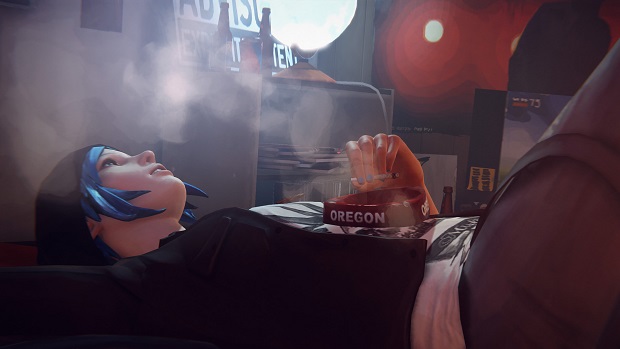
"Where the game pulls away from becoming a "High School Nerd Simulator" however comes in the way of its game mechanics."
Taking influence from a variety of games that make use of a similar formula. Life is Strange is a game all about choice and the game’s mechanics follow the same course, as one would expect due to the strong narrative structure of the game.
In some instances however the game contradicts itself as it seems to imply choice, when it really wants the player to discover and explore the environment as a way of guiding the player to one of its possible narrative outcomes.
It’s almost as if its hand holding the player along a journey as a means to what happens next. On the other hand choices that the player does make or doesn’t make for that matter, sheds to light its consequences later on in the game. This works well in delivering unexpected events and surprises for the player while remaining strong with its story.
One thing that the game unfortunately suffers from in regards to its game mechanics is something that’s become fairly common amongst games of this nature. When it comes time to engaging with other characters or objects within the environment, such as making brash decisions or having conversations, there’s no indication of any sort that presents a visual feedback for Max’s upcoming reactions, or the emotional tone that Max is going to deliver when responding with the player’s chosen action or dialogue.
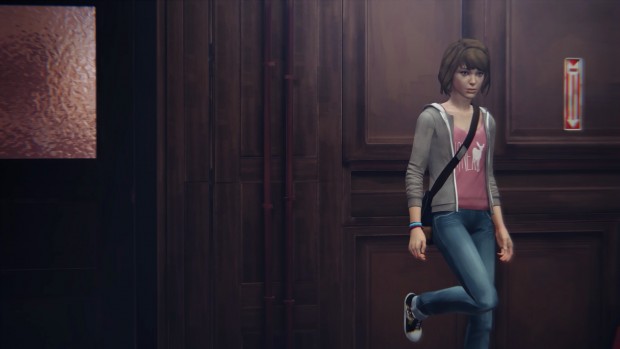
" This works well in delivering unexpected events and surprises for the player while remaining strong with its story."
While the characters themselves pack plenty of emotion and personality to deliver a sense of who they are, what sort of life they live and how they’re currently feeling. When it comes down to the player’s own input however, Max’s selection for responses towards a conversational topic can sometimes feel contradictory to her actual emotions at the time.
These instances are rare and one would have to be paying a great deal of attention in order to notice them. The one thing that successfully manages to balance this out though is the impeccable amount of structure and strength within its incredible and unpredictable story. Along with the choice to avoid or manipulate events that have already taken place thanks to Max’s ability to reverse time, the game continuously leaves the player wondering “What if?”
Exploring the game’s environment which at this point in time is limited to Max’s school and the home of her best friend, there’s a high level of mood and emotion that’s present, one that remains consistent as the player discovers new things to interact with. Along with a high level of detail being given to finer details in the environment such as dormitory notice boards, classroom televisions and the contents of Max’s bedroom. It’s quite remarkable.
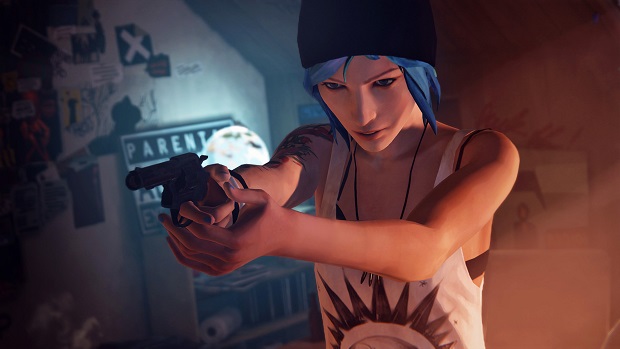
"Along with a high level of detail being given to the objects within the environments such as dormitory notice boards, classroom televisions and the contents of Max's bedroom."
Max always has something to say or cast her opinion on as to how she’s feeling or what she thinks of something that’s captured her attention. This gives more possibilities for discovering new scenarios in the game. Life is Strange has many scenarios in terms of gameplay and the choices you make where the influence from other games are obvious.
The Wolf Among Us, Alan Wake, Gone Home and Heavy Rain come to mind, but that’s not to say it’s a bad thing nor does the game lack any form of originality. Life is Strange is very much its own game with its own identity and had the game excluded its game mechanics and ignored influence from said games, it would’ve been disregarded as a stale hipster simulator with poorly underdeveloped plot-twists.
Mixing a visual style of exaggerated realism and a cartoon-esque oil painting, Life is Strange doesn’t attempt or any make any efforts to push the limits of the corresponding hardware. What players are presented with is something that compliments the mood and atmosphere of what the game entails. This does well in delivering a sense of emotion and tone in regards to its characters which is where the game holds many of its strengths.
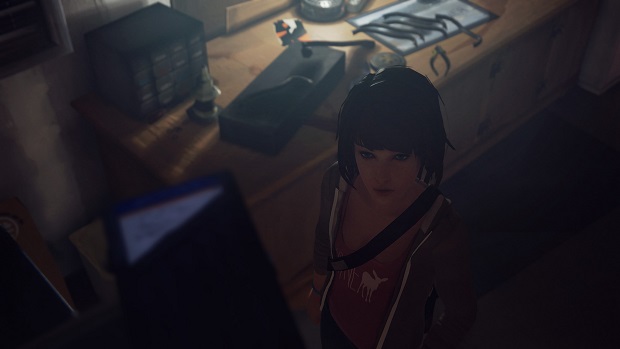
"What players are presented with is something that compliments the mood and atmosphere of what the game entails. "
Combined with sound effects and dialogue that aid in presenting a living and breathing world that convinces the player that each and every NPC in the game has a life of their own, whether or not the player chooses to interact with them. There’s something special here in the game that’s easy to appreciate.
The doors of slamming lockers in the hallway, teenagers gossiping amongst their peers and sprinklers going off out in the School’s courtyard, It’s certainly believable. Along with the game’s outstanding soundtrack that comes into play during certain plot points or twists in the game, there’s a great deal of structure being placed upon the game’s factor of immersion.
Immersion is where I personally give the game the most credits and although level design is limited to small sandbox areas separating the school or current environment, however it doesn’t degrade the level of immersion I felt when exploring what the game had to offer. The only real issue I experienced in the game was in regards to the quality of character facial animations.
"The only real issue I experienced in the game was in regards to the quality of character facial animations."
There’s no denying how convincing the emotions are being delivered by characters, but the timing of character dialogue and the animations of their facial movements are clearly out off sync with its audio.
It’s by no means game breaking or all that distracting but it is noticeable, especially when Max and the people she comes into contact with always has something to say. For those looking for a narrative-driven game that successfully manages to keep the player in full control, as opposed to lengthy cut-scenes as a means to tell its story then look no further.
There’s a certain level of nostalgia present that most will be able to relate to. Combined with an interesting character who appears to have her own level of mystery that’s hidden from the player, there’s alot to look forward to in terms of how the character will develop later on in the upcoming episodes.
This game was reviewed on the PC.
Intriguing story and excellent use of game mechanics.
Out of sync audio.









